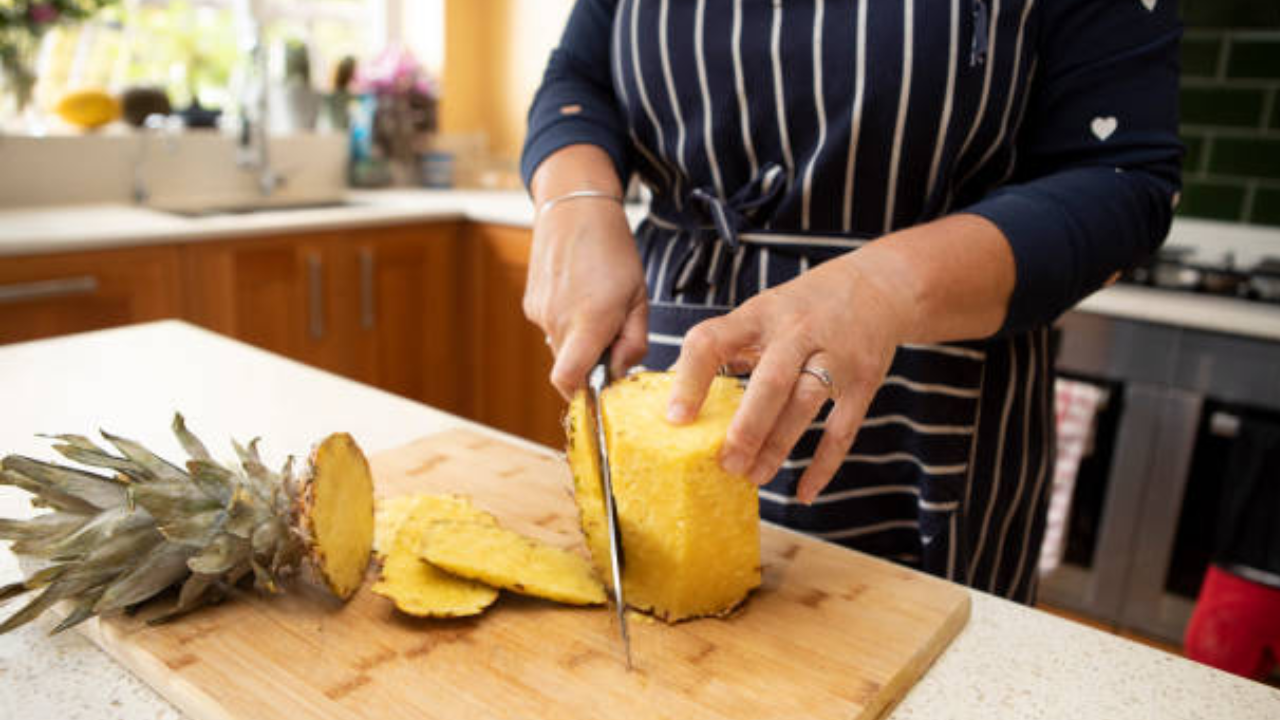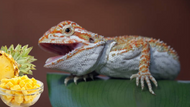Can Bearded Dragons Eat Pineapple?
Posted by James Wright on Apr 5th 2024
Pineapple is known for its refreshing smell, amazing sweet taste, and health benefits.
Most people love to enjoy it as a snack or a pizza topping. So, if you are wondering, “ Can you share this sweet fruit with your bearded dragon? “
Yes, your bearded dragon eats pineapple.
However, dragons need a well-balanced diet of insects, fruits, and vegetables. So, it is essential to know their nutritional needs before adding pineapple to their diet.
So, before you do so, knowing how much and how often to give it to your pet is crucial. Here, we will answer all your queries about whether bearded dragons can eat pineapple.
Nutrients Present in Pineapple

Pineapple include nutrients and beneficial compounds. Here are some important nutrients present in pineapple:
Calcium
Pineapple contains calcium, which helps dragons with:
- The development of bones
- Muscle contraction
- The development of their healthy eggs and maintaining their good reproductive health
- Preventing metabolic bone disease ( MBD)
Potassium
This nutrient in pineapple can help beardies with muscle function, preventing kidney problems and lowering water retention.
Fiber
Fiber is an essential part of a bearded dragon’s diet. It helps with digestion and prevents constipation in beardies.
Can Bearded Dragons Have Pineapple Daily?
Isn’t it refreshing to eat pineapple? If so, can your pet also join the fun?
The answer is yes! Bearded dragons can have pineapple in their diet, but it should be in moderation( once or twice a month is advisable).
It is also important to consult the veterinarian for advice on the bearded dragon’s specific health and dietary needs.
How To Prepare Pineapple for Your Bearded Dragon

Here, we will dive into the tips for preparing pineapple for dogs.
1. Choose a Fresh Pineapple
Consider a heavy pineapple with green leaves and a firm shell. Pick it up and smell it at the bottom. If it smells sweet, it is ripe.
2. Remove the Core and Rinds
First, use a sharp knife to remove the core and rinds (the spiny skin).
3. Cut it Into Small Pieces
Cut the pineapple into smaller pieces. And remember that the pieces should be easily digestible by the bearded dragon.
4. Feed the Pieces
Feed the pieces to your beardie from a dedicated bowl inside their tank. Also, check the behaviour of your bearded dragon to make sure it is not facing any problems.
Additional Nutritious Options for Your Bearded Dragon
Apart from this amazing fruit, there are other options for nutritious foods you can also include in your pet’s diet. As TopFlight Dubia also has extensive research on bearded dragons. They have found that it is important to maintain a balanced diet of bearded dragons to ensure their overall well-being. Here, we will dive into other nutritious foods you can include in your pet’s diet.
|
Vegetables To Consider |
Fruits To Consider |
Insects To Conside r |
|
Beet Greens |
Apple |
Dubia Roaches |
|
Collard Greens |
Apricot |
Cricket |
|
Swiss Chard |
Cherries |
Earthworm |
|
Parsley |
Strawberry |
Silkworm |
|
Broccoli |
Grapes |
Hornworm |
The Bottom Line
Pineapple is a favourite fruit for humans and bearded dragons too. It includes various nutrients like calcium, fiber, potassium, and more. So, if you want to include this fruit in your beloved pet’s diet, you can do so. First, you should feed the pineapple to your pet in smaller pieces occasionally. You can also add other nutritious foods like Dubia roaches, crickets, earthworms, and more to add variety to your beardie’s diet.

